
Where I come from, the sunrise signals hope and new beginnings. According to my kinsmen, this would be a day the giraffe would have seen from yesterday on account of her tall stature. It would also be a day for rejoicing because a new child would be given its name. If the sun is not visible in the morning, the naming ceremony moves to the next day.
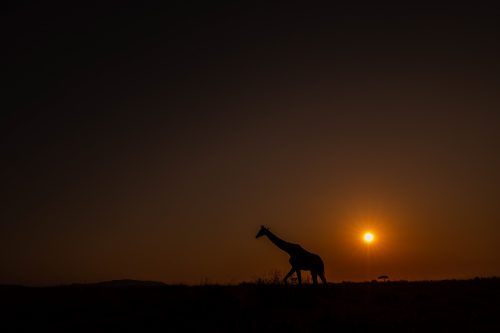
Throughout this week, I’ve enjoyed playing and experimenting with various techniques to make the most of our glorious sunrises. Here in the Mara, giraffes, and elephants make great subjects as the rays hit the grassy plains.
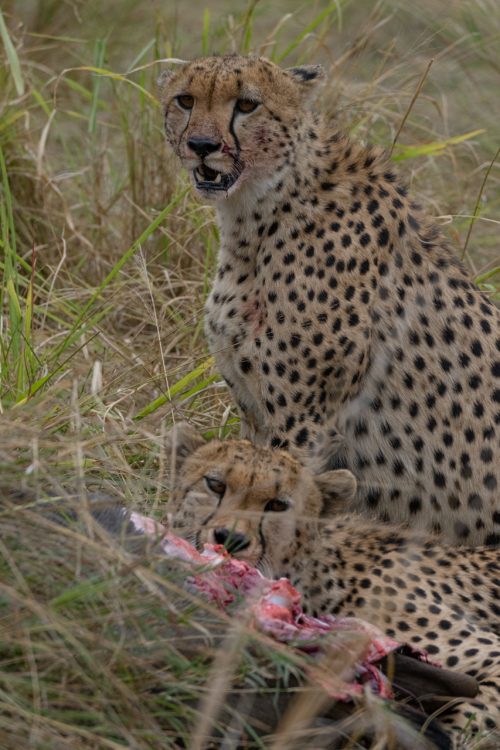
While the focus has been on the arrival of the Migration and the anticipated crossings, safaris down south have brought some interesting discoveries. The Tano Bora coalition of cheetahs who recently split from five to four and now – to just two – moved south for the incoming herds. The two boys came across a stray wildebeest calf and couldn’t resist the kill. As I arrived, they were enjoying their meal.

During my childhood, in the harvest time, I used to see the African grey crowned crane migrating across the farmlands. The only knowledge I had about these birds was their call, which gave them the native name 'ekong'ai', so I knew that they were water birds. Upon sighting one, they are always a fast favourite of every safari guest. This image is one of my best of the week, as a warthog arrived on the scene just in time to make it into the shot.

I can confirm that the Migration has officially reached the Mara. Along with the main characters, the wildebeests, there are hundreds of thousands of zebras. And joining them are elands, topis, and Thomson's gazelles. Unlike the other herbivores, zebras tend to stay with the gnus, creating great photographic contrast.

The famous tree-climbing lions of the Mara. While Mama Kali of the Angama Pride was out and about, this female had no choice but to seek elevation to gain an aerial perspective. She went up the tree and gazed around for the rest of the pride. When she realised they were not near her, she descended and went searching for them.

With the arrival of the Migration, one thing is certain: most of the grazing plains will be dominated by the moving thousands. Elephants are great trekkers and explorers with an instinct for the changing times. During this time of the year, the elephants tend to regroup and seek refuge in calmer terrain less populated by the mega herds. Far away from the noise, the stomped grass, and dung, I found this herd heading for the hills.

This leopard, Maji, was some distance away from her usual hideout, looking to make a kill. Unfortunately, her intended targets became aware of her as her presence was fairly obvious. It made me wonder whether she really was up to the task or was simply showing off. With the Migration corridor being around her territory, it is going to be exciting to see the happenings in the coming week.

This resident male topi’s display grounds are up for grabs due to the incoming of many foreigners amongst the wildebeests in the Great Migration. More termite mounds are being claimed as territorial display stations to other males and females. Interestingly, if the dominant male is busy elsewhere, the leading female of the harem takes over duty, intimidating any opportunistic newcomers.
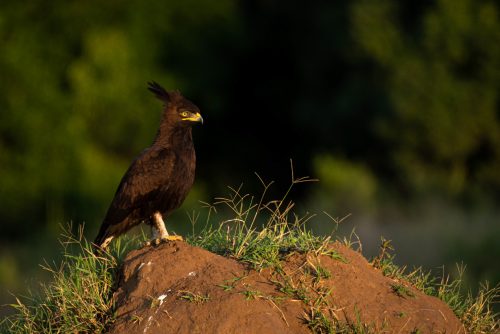
The unmistakable long-crested eagle is one of my favourite birds to photograph, as they tend to pose so well, showing off their crown. I came across this one as he swooped to catch something, only to miss and dejectedly perch on a nearby termite mound.

The Bila Shaka Pride has been camped in the Triangle long enough to be the undisputable owners of the River and Angama Prides. Each of the three males has been mating this week. Just a few months ago, I worried that they might be here for a short while and leave, but I have been proven wrong by their continued reign and now the passing of their genes to the next generation. The countdown begins in the next three months for the arrival of the cubs.

Just below Angama Mara, the alpha queen, Mama Kali, led the rest of the lionesses to successfully bring down a buffalo. This is a new feat as she normally avoids high-risk hunts. It seems that as the pride’s three daughters have come of age, bolstering their numbers to five, they are able to increase the size of the prey they go after.
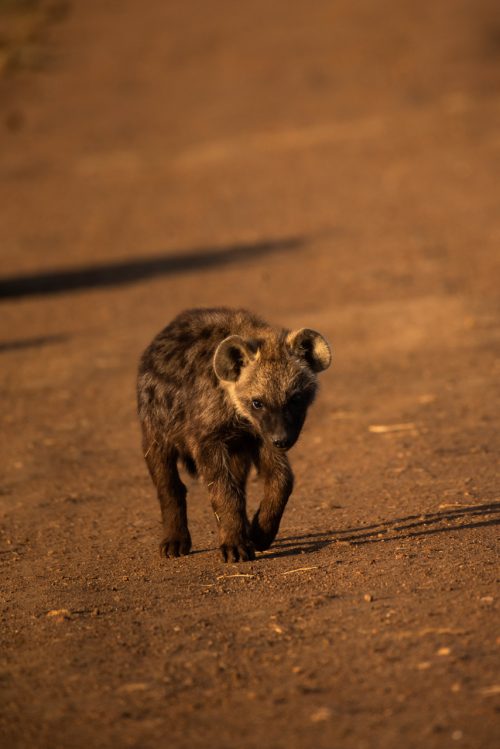
The northern clan of hyenas is growing and the pups are thriving. Most mid-mornings, the main road below Angama Mara has been dominated by these inquisitive little ones as they come to inspect the comings and goings of every safari vehicle.
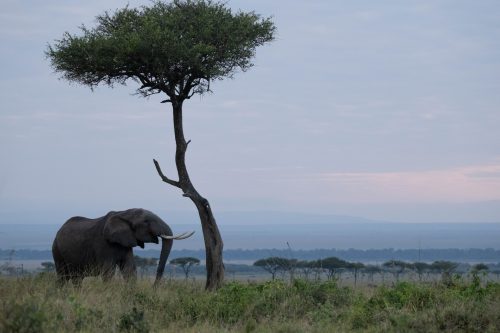
The story of the Maasai Mara and the impact its elephants have had in molding the landscape is evident here with this bull elephant. I caught him just as he had finished shaking the desert date tree that had ripe dates for him. Sometimes, as I have seen before, the tree cannot withstand the force and breaks. For many years, elephants and fire have been the key agents behind the landscape of the ‘dotted land’, which gives the Maasai Mara its name.

The sky is filled with hot-air balloons every morning now. As much as guests get an aerial view of the land so, too, the animals on the ground get an interesting perspective of the balloons. This week, as I followed the hot-air balloon to its landing site to collect guests, I came across this lioness majestically enjoying the view.

Even the most elusive and shy of creatures can sometimes behave in unexpected ways. This female leopard had killed an impala which she stuck in the branches and fed on for a while. An hour later, she moved to the thickest of the branches with a full tummy and reclined from the forks of the tree. For a long time, she lay like that. Could it be that even leopards suffer from ‘food hangovers’ and all she needed was a comfy hammock to rest upon while she digested her feast?

We watched a little giraffe spending time with family and friends, waiting until it's tall enough to 'see tomorrow'.

This week two years ago we were looking at things from above and the animals were getting an interesting perspective of us in the basket of a hot air balloon.

The tree-climbing lions were as comfortable in a tree three years ago as they are today. Who knows what they'll be doing in three years' time?
Filed under: This Week at Angama
Subscribe for Weekly Stories
Comments (0):

Angama Image Gallery